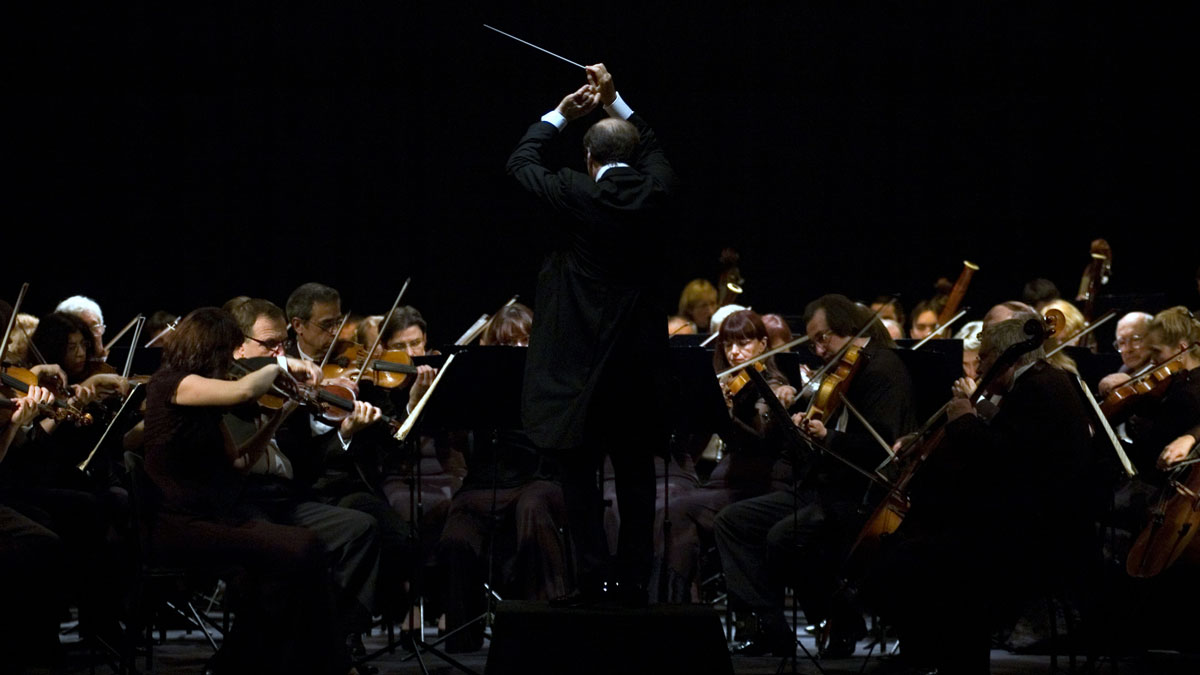Welcome to the enchanting realm of the orchestra—a collective of talented musicians whose harmonious collaboration gives birth to the awe-inspiring soundscapes of symphonic music. In this comprehensive guide, we embark on a captivating exploration of the orchestra, dissecting its sections and instruments to unveil the intricacies of this magnificent ensemble.
Join us as we meet the strings, woodwinds, brass, and percussion, discovering the roles they play, the instruments they wield, and the distinct contributions each section brings to the symphonic tapestry. Prepare to be immersed in the symphonic wonders that unite these diverse musical voices into one breathtaking whole.
I. The String Section:
We begin our journey with the backbone of the orchestra—the string section. Comprising the violin, viola, cello, and double bass, the string section forms the core of the symphonic ensemble. Each instrument possesses its own distinct characteristics and contributes to the orchestral landscape in unique ways.
Violin: The violin, with its soaring melodies and expressive capabilities, takes on the role of the lead voice in the section. Its nimble bowing and delicate fingerwork bring forth a wide range of emotions, from poignant sweetness to fiery passion.
Viola: The viola, slightly larger than the violin, offers a warm and mellow tone, often providing essential harmony and inner voice support.
Cello: With its rich and resonant sound, the cello adds depth and richness to the ensemble, capable of producing both lyrical melodies and powerful bass lines.
Double Bass: Finally, the double bass, the largest and lowest-pitched instrument in the orchestra, provides the foundation and rhythmic stability with its deep and resonant tones.
Together, these four instruments create a cohesive and harmonious blend, capable of evoking a vast array of emotions. From tender and delicate passages to dynamic and energetic performances, the string section forms the heart of the orchestra, intertwining melodies, harmonies, and textures that captivate audiences with their beauty and expressiveness. Through their skilled bowing techniques, intricate fingerwork, and remarkable musicality, the string section brings the music to life, embodying the soul of the symphony.
Spotlight: Johann Pachelbel’s – Canon in D
Johann Pachelbel’s “Canon in D” is a timeless and beloved orchestral piece, composed in the late 17th century. It prominently features the string section, showcasing the enchanting melodies and harmonies of violins, violas, cellos, and double basses.
The piece’s repeating bassline, known as the ground bass, provides a solid foundation, allowing each string instrument to shine individually while creating a mesmerizing tapestry of sound. “Canon in D” has a simple yet captivating structure that draws listeners in, making it a popular choice for weddings, commercials, and popular media.
Through its graceful melodies and interwoven harmonies, this composition demonstrates the remarkable ability of the string section to captivate audiences and evoke a sense of beauty and tranquility. It stands as a testament to the enduring appeal of orchestral music and the timeless charm of strings in creating unforgettable musical experiences.
II. The Woodwind Section:
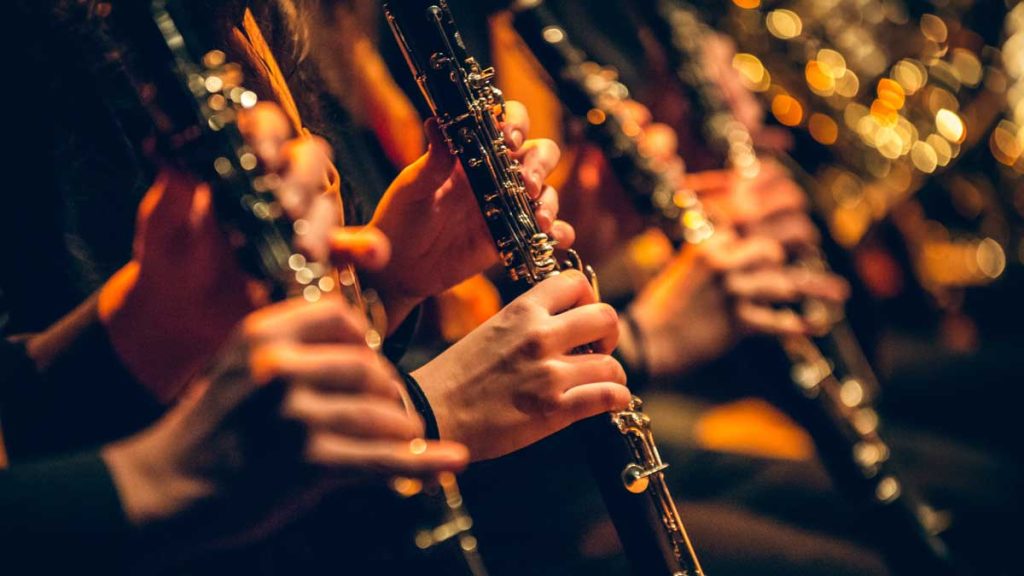
We continue our exploration with the enchanting woodwind section, a collection of wind instruments that bring a diverse range of colours and expressive qualities to the orchestra. Let’s dive into the unique characteristics of each instrument:
Flute: Graceful and agile, the flute dazzles with its shimmering and ethereal tone. Its radiant sound can soar effortlessly through the orchestra, adding a touch of lightness and brilliance to the ensemble.
Oboe: The oboe’s soulful and expressive voice resonates with depth and emotion. Capable of capturing both tender lyricism and dramatic intensity, it often takes on poignant melodies and serves as a leading voice in woodwind ensembles.
Clarinet: With its versatile and velvety tone, the clarinet is a chameleon of the orchestra. It seamlessly transitions between registers, from warm and mellifluous in its lower range to bright and vibrant in its upper range. The clarinet’s agility and rich timbre make it a vital contributor to both solo passages and ensemble harmonies.
Bassoon: The bassoon’s deep, resonant, and distinctive sound adds a captivating richness to the woodwind section. Its expressive qualities range from warm and melancholic to playful and whimsical. As the lowest-pitched woodwind instrument, the bassoon provides a strong foundation and contributes to the ensemble’s harmonic depth.
As individual voices, the woodwind instruments offer their unique colours and characters. Together, they blend harmoniously, creating lush harmonies, intricate textures, and evocative melodies that enrich the symphonic tapestry.
Spotlight: Wolfgang Amadeus Mozart’s – Gran Partita
Wolfgang Amadeus Mozart’s “Gran Partita” is a celebrated chamber work that prominently features the woodwind section. This captivating serenade showcases oboes, clarinets, basset horns, bassoons, and horns.
In the “Gran Partita,” Mozart skillfully explores the diverse tonal qualities of each woodwind instrument, allowing them to shine individually and in harmony. The woodwinds engage in intricate melodies and harmonious dialogues, creating a captivating tapestry of sound.
As you listen to the “Gran Partita,” you’ll be enchanted by the woodwind section’s enchanting melodies and rich harmonies. This serenade offers a captivating journey through the sonic possibilities of the woodwind ensemble, immersing you in a world of intricate musical textures and delightful interplay. Mozart’s “Gran Partita” is a testament to the captivating allure and expressive power of the woodwinds, captivating audiences with their melodic beauty and harmonic richness.
III. The Brass Section:
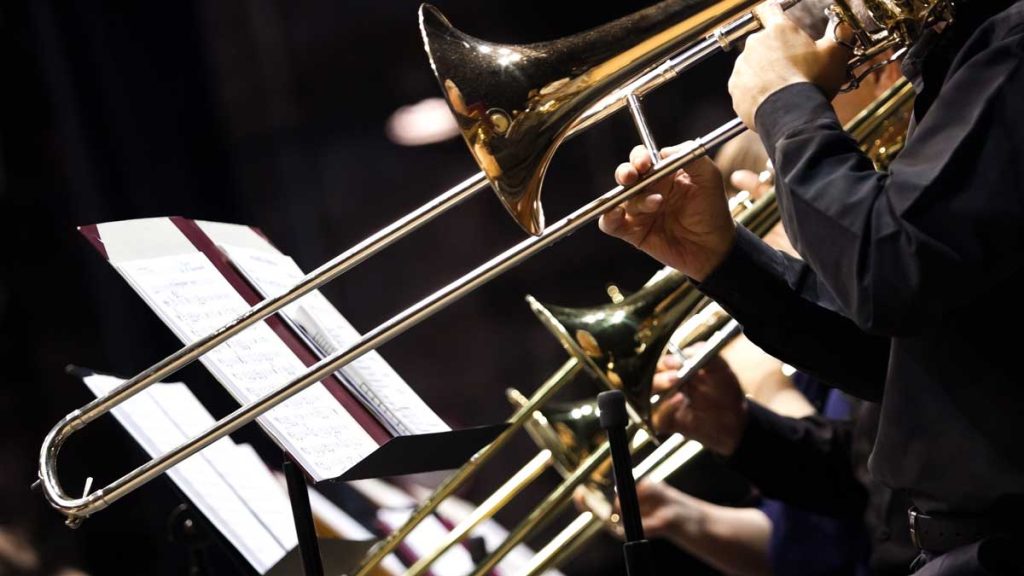
Our exploration of the orchestra brings us to the grandeur and power of the brass section. Comprising instruments crafted from gleaming brass, this section adds brilliance and resounding impact to the orchestral sound. Let’s discover the instruments that contribute to the majestic brass ensemble:
Trumpet: The trumpet’s regal and commanding sound cuts through the orchestra with its bright and piercing tones. Its vibrant presence can range from triumphant fanfares to lyrical melodies, evoking a sense of excitement and grandeur.
French Horn: The French horn’s rich and mellow timbre resonates with warmth and nobility. Known for its lyrical and expressive qualities, it often plays a vital role in creating harmonic depth and adding a touch of elegance to the ensemble.
Trombone: The trombone’s robust and sonorous voice adds a powerful and resonant foundation to the brass section. Capable of producing both majestic fanfares and smooth, flowing melodies, its versatility brings depth and weight to the orchestra.
Tuba: As the lowest-pitched brass instrument, the tuba provides a solid and commanding bass foundation. With its deep and resonant sound, it brings a sense of depth and power to the ensemble, adding weight and grandeur to the orchestral sound.
The brass section, with its commanding presence and soaring melodies, creates moments of majestic splendour in the orchestra. From triumphant fanfares to lyrical solos and harmonic support, the brass instruments infuse the ensemble with power, brilliance, and emotional depth.
Spotlight: Richard Strauss – Also sprach Zarathustra
Richard Strauss’ “Also sprach Zarathustra” is a renowned orchestral piece that prominently features the brass section, most notably in its iconic opening fanfare. The “Sunrise” movement opens with a majestic brass fanfare, featuring trumpets and horns. This musical moment is instantly recognizable and has left a significant mark in film and television soundtracks, notably as the theme for “2001: A Space Odyssey.”
Throughout the composition, the brass section continues to shine with powerful and expressive melodies. Trumpets deliver regal and heroic lines, while French horns add depth and richness. Trombones and tuba contribute a sense of grandeur with their resonant tones, adding weight to the composition. The orchestration allows the brass section to showcase its versatility, captivating listeners with a wide range of expressions.
The enduring popularity of “Also sprach Zarathustra” and its iconic brass moments highlights the lasting fascination and impact of the brass section in orchestral music. Its commanding and majestic sound adds drama and a sense of awe, leaving a lasting impression. As you listen, you’ll be transported into a world of grandeur and excitement, experiencing the extraordinary capabilities of these remarkable instruments. The brass section, through masterpieces like this, continues to captivate and inspire, leaving an indelible mark on classical music and beyond.
IV. The Percussion Section:
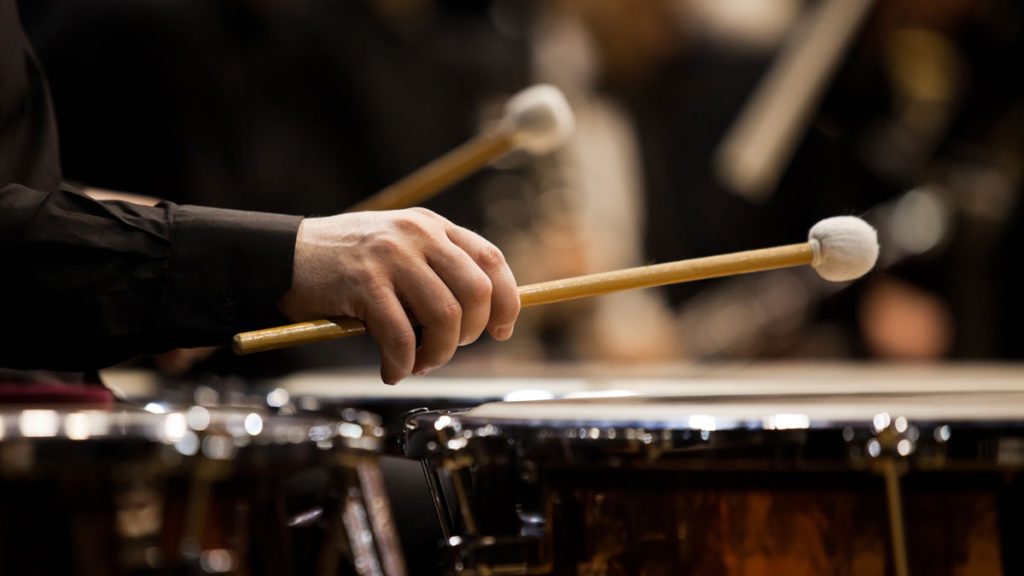
We now turn our attention to the vibrant and dynamic world of the percussion section, the heartbeat of the orchestra. Comprising an array of instruments that produce distinct rhythmic and textural elements, the percussion section adds depth, energy, and excitement to the orchestral sound.
At the core of the percussion section, we find the timpani, also known as kettle drums. These large, tunable drums create a commanding presence with their deep and resonant tones. The timpani player skillfully manoeuvres between different pitches, providing a strong rhythmic foundation and enhancing dramatic moments in the music.
Cymbals, with their shimmering and metallic sound, add brilliance and impact to the orchestra. The clash of the cymbals creates thrilling accents and dramatic crescendos, adding a touch of brilliance to climactic passages. Additionally, the snare drum, with its sharp and crisp sound, contributes to the rhythmic drive of the music, providing accents and syncopations that enhance the overall groove and momentum.
Other percussion instruments, such as the bass drum, tambourine, triangle, and xylophone, offer a diverse range of colours and effects. The bass drum produces deep and thunderous thuds, accentuating climactic moments and adding weight to the orchestral sound. The tambourine provides a lively and rhythmic jingle, while the triangle offers delicate and sparkling accents. The xylophone adds a bright and percussive tone, adding melodic fragments and enhancing the orchestral texture.
The percussion section, with its array of instruments and rhythmic prowess, elevates the orchestral experience to new heights. Whether it’s the thunderous rolls of the timpani, the shimmering crashes of the cymbals, or the intricate patterns of the snare drum, the percussion section injects energy, drive, and a sense of excitement into the music.
Throughout the orchestra repertoire, the percussion section plays a vital role in enhancing dramatic moments, creating rhythmic complexity, and adding vibrant textures. From symphonies to concertos, film scores to ballets, the percussion section leaves an indelible mark on the overall sound and emotional impact of the music.
As you listen to orchestral works, pay close attention to the dynamic and captivating contributions of the percussion section. Their rhythms, textures, and accents will transport you to new musical dimensions, adding layers of excitement and pulse to the symphonic tapestry.
Spotlight: Maurice Ravel – Bolero
In Maurice Ravel’s “Boléro,” percussion takes center stage, crafting a mesmerizing and hypnotic rhythmic journey. The piece kicks off with a simple snare drum rhythm, setting the foundation for the entire composition. This relentless repetition builds anticipation and serves as the driving force.
As the music unfolds, various percussion instruments join in, elevating the intensity and complexity of the rhythms. Timpani adds dramatic accents, the bass drum provides a resounding pulse, and other instruments like tambourine, cymbals, and xylophone contribute to the sonic richness. Together, they create intricate layers of rhythm that build tension and excitement.
Ravel’s ingenious use of percussion in “Boléro” showcases these instruments’ power to captivate listeners. The interplay of diverse percussion voices, from the persistent snare drum to the booming bass drum and a range of auxiliary instruments, forms a dynamic and entrancing soundscape. This rhythmic precision and imaginative orchestration make “Boléro” an enduring favorite, captivating audiences with its hypnotic groove and gradual crescendo of intensity.
V. The Conductor:
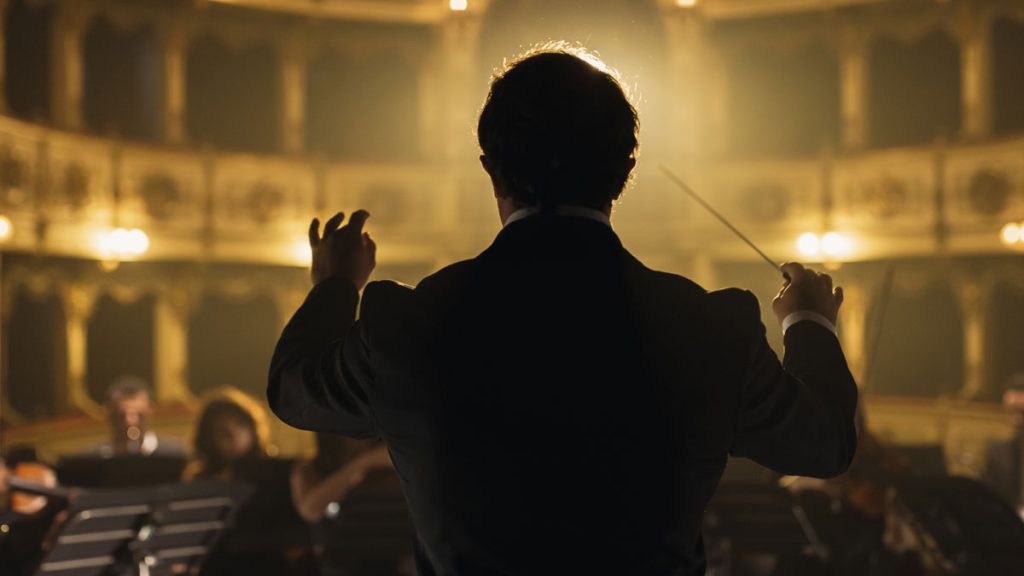
No exploration of the orchestra is complete without an appreciation for the role of the conductor. The role of the conductor in an orchestra is multi-faceted and essential to the ensemble’s performance. As the musical guide, the conductor serves as the authoritative figure who interprets the composer’s intentions and shapes the overall sound and expression of the orchestra. Through their gestures, body language, and facial expressions, they communicate their musical vision to the musicians, ensuring cohesion and unity in the performance.
One of the primary responsibilities of the conductor is to provide clear and precise cues for the musicians, indicating the start, tempo, dynamics, and other musical elements. They use their baton or hands to indicate the beat and gestures to convey nuances in phrasing, articulation, and interpretation. The conductor’s mastery of these conducting techniques allows them to shape the music in real-time, bringing out the desired musicality and emotions.
Beyond being a timekeeper, the conductor is also an interpreter of the music. They study the score extensively, analysing the composer’s intentions, historical context, and musical structure. Through their deep understanding and insight, they make artistic decisions about tempo, dynamics, balance, and expression, breathing life into the written notes and transforming them into a captivating performance.
Furthermore, the conductor plays a crucial role as a communicator, bridging the gap between the composer, the musicians, and the audience. They convey their interpretation of the music to the orchestra, conveying their vision through their gestures and facial expressions. At the same time, they also serve as a mediator between the musicians, fostering collaboration and unity within the ensemble.
The conductor’s leadership extends beyond the confines of the rehearsal and performance. They often engage in extensive research, score study, and musical analysis to deepen their understanding of the repertoire. They work closely with the musicians, offering guidance, inspiration, and encouragement, nurturing an environment of trust, respect, and artistic excellence.
Behind the Scenes: Orchestra Rehearsals and Dynamics
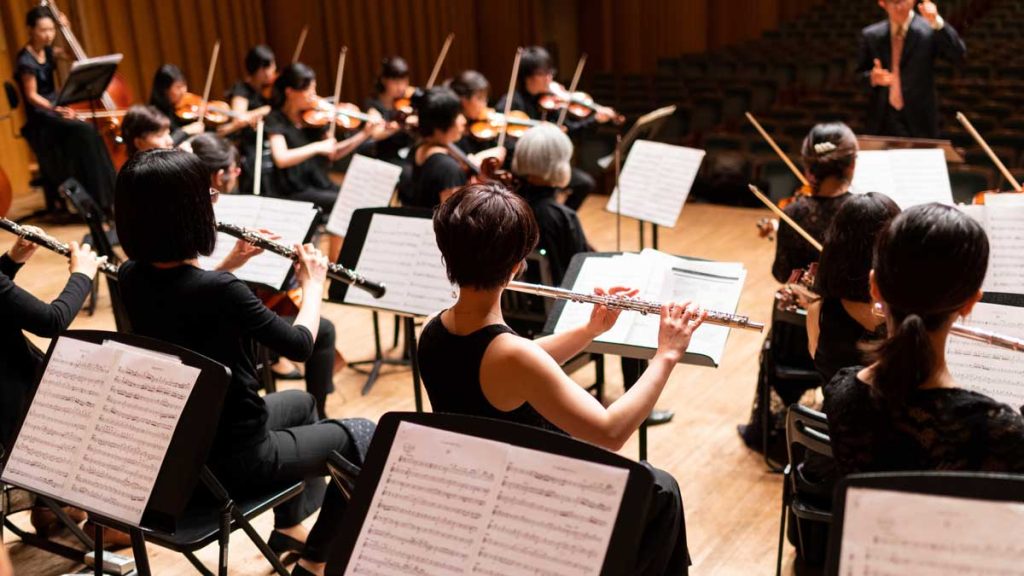
These rehearsals offer a fascinating glimpse into the intricate and collaborative process of preparing for a performance. It is within the rehearsal space that musicians, guided by the conductor, delve into the nuances of the music, refine their interpretation, and create a cohesive ensemble sound.
At the heart of the rehearsal process lies the dynamic interaction between the musicians and the conductor. The conductor takes on the role of a musical leader, guiding the ensemble towards a unified interpretation. Through their gestures, cues, and verbal instructions, they shape the phrasing, dynamics, and overall musicality of the performance. They have the important task of balancing the individual voices within the orchestra, ensuring that each section blends harmoniously and that the intended emotions and expressions of the music are conveyed.
Collaboration is key during rehearsals, with musicians listening intently to one another and responding to the conductor’s guidance. They engage in a continuous dialogue, sharing ideas, making adjustments, and striving for a collective interpretation that brings out the best in the music. The rehearsal process allows for experimentation and exploration, as musicians work together to find the right balance, blend, and articulation. It is a space where creativity flourishes, and artistic decisions are collectively shaped.
Within the orchestra, there is also a sense of camaraderie and mutual support. Musicians learn to listen attentively to their colleagues, adjusting their playing to achieve unity and cohesion. They respond to the conductor’s direction while also interacting with one another through non-verbal cues and subtle gestures. The rehearsal process fosters a shared sense of responsibility, as each musician contributes their unique skills and talents to create a harmonious whole.
Orchestra rehearsals are not only dedicated to perfecting the technical aspects of the music but also to exploring the deeper emotional and expressive layers of the composition. Both the musician and the conductor work together to understand the composer’s intentions, unravel the narrative of the music, and bring out its inherent beauty and power. They strive to create a performance that moves and captivates both themselves and the audience.
Conclusion
As we conclude our comprehensive exploration of the orchestra, we are left in awe of the collective brilliance that arises from the harmonious collaboration of musicians and instruments. The strings, woodwinds, brass, and percussion sections unite in a symphonic alchemy, breathing life into the musical visions of composers across centuries.
The next time you find yourself in the presence of an orchestra, let your appreciation for its intricate ensemble of instruments and sections deepen. From the soaring melodies of the violins to the thunderous power of the brass, the delicate trills of the woodwinds to the rhythmic pulse of the percussion, embrace the symphony of sounds that unites to create moments of sheer musical transcendence.
Now, armed with knowledge and a renewed sense of wonder, immerse yourself in the captivating world of orchestral music, and let its magnificent ensemble of instruments and sections transport you to realms of beauty and emotion that only symphonic music can evoke.

